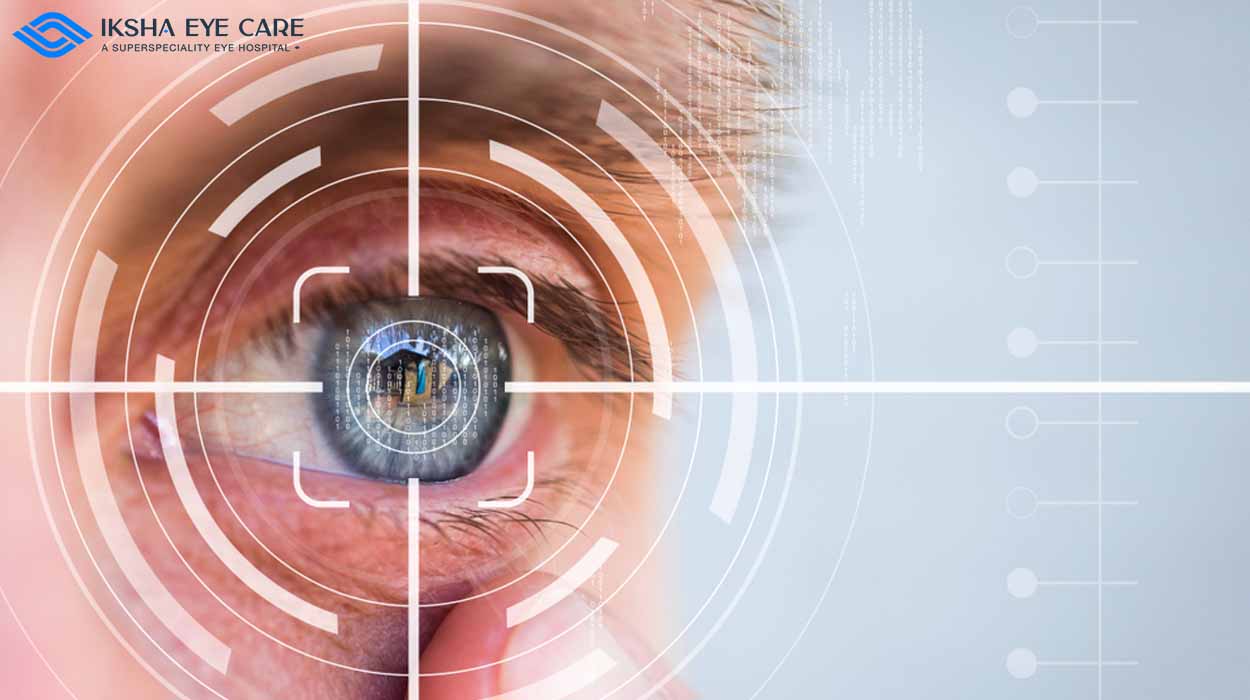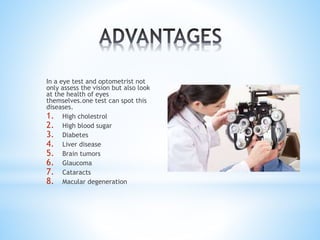The Role of Advanced Diagnostic Tools in Identifying Eye Disorders
In the world of ophthalmology, the usage of advanced analysis tools has transformed the early identification and monitoring of different eye conditions. From discovering refined adjustments in the optic nerve to monitoring the progression of retinal diseases, these modern technologies play an essential function in boosting the accuracy and efficiency of diagnosing ocular conditions. As the need for accurate and timely medical diagnoses remains to expand, the integration of sophisticated tools like optical comprehensibility tomography and aesthetic field screening has actually ended up being indispensable in the world of eye treatment. The elaborate interaction in between innovation and ocular practices not just sheds light on complex pathologies but likewise opens up doors to customized treatment methods.
Importance of Early Diagnosis
Very early diagnosis plays a pivotal duty in the efficient management and therapy of eye disorders. By spotting eye problems at an early stage, medical care companies can provide appropriate therapy plans customized to the particular condition, eventually leading to better results for clients.

Technology for Identifying Glaucoma
Sophisticated diagnostic technologies play a crucial duty in the early discovery and tracking of glaucoma, a leading source of permanent blindness worldwide. One such modern technology is optical comprehensibility tomography (OCT), which offers thorough cross-sectional pictures of the retina, enabling the measurement of retinal nerve fiber layer density. This measurement is crucial in evaluating damages brought on by glaucoma. An additional advanced device is visual area testing, which maps the level of sensitivity of a person's visual area, helping to find any areas of vision loss feature of glaucoma. Additionally, tonometry is utilized to measure intraocular stress, a major risk aspect for glaucoma. This examination is important as raised intraocular pressure can cause optic nerve damages. Moreover, newer modern technologies like using expert system algorithms in evaluating imaging information are revealing promising cause the early discovery of glaucoma. These sophisticated diagnostic tools allow eye doctors to identify glaucoma in its very early phases, enabling prompt treatment and far better monitoring of the condition to avoid vision loss.
Duty of Optical Coherence Tomography

OCT's capability to quantify retinal nerve fiber layer thickness enables for specific and objective measurements, aiding in the early discovery of glaucoma also prior to aesthetic field problems come to be apparent. In general, OCT plays a critical role in enhancing the diagnostic accuracy and management of glaucoma, eventually adding to far better end results for people at risk of vision loss.
Enhancing Diagnosis With Visual Field Testing
A vital element in detailed ocular analyses, aesthetic area testing plays an essential function in boosting the analysis procedure for numerous eye conditions. By examining the complete degree of an individual's a knockout post aesthetic field, this test offers critical info regarding the practical integrity of the entire visual path, from the retina to the aesthetic cortex.
Aesthetic field testing is particularly beneficial in the medical diagnosis and monitoring of problems such as glaucoma, optic nerve conditions, and various neurological conditions that can impact vision. With quantitative measurements of outer and main vision, clinicians can spot subtle adjustments that might suggest the presence or development of these conditions, even prior to visible symptoms occur.
In addition, aesthetic field screening permits for the tracking of treatment efficiency, assisting eye doctors customize therapeutic treatments to private patients. eyecare near me. By tracking adjustments in visual field efficiency in time, medical care companies can make informed choices about readjusting medicines, recommending medical interventions, or applying other appropriate steps to maintain or improve a person's visual feature
Managing Macular Deterioration

Verdict
To conclude, progressed analysis devices play an essential duty in identifying eye problems early. Technologies such as Optical Coherence Tomography and visual field testing have considerably enhanced the precision and effectiveness of identifying conditions like glaucoma and macular degeneration. Early detection enables timely intervention and management of these problems, inevitably bring about far better outcomes for clients. It is critical for health care experts to remain updated on these improvements to provide the best possible look after their people. eyecare near me.
 Kel Mitchell Then & Now!
Kel Mitchell Then & Now! Andrew Keegan Then & Now!
Andrew Keegan Then & Now! Joshua Jackson Then & Now!
Joshua Jackson Then & Now! Melissa Joan Hart Then & Now!
Melissa Joan Hart Then & Now! Kelly Le Brock Then & Now!
Kelly Le Brock Then & Now!